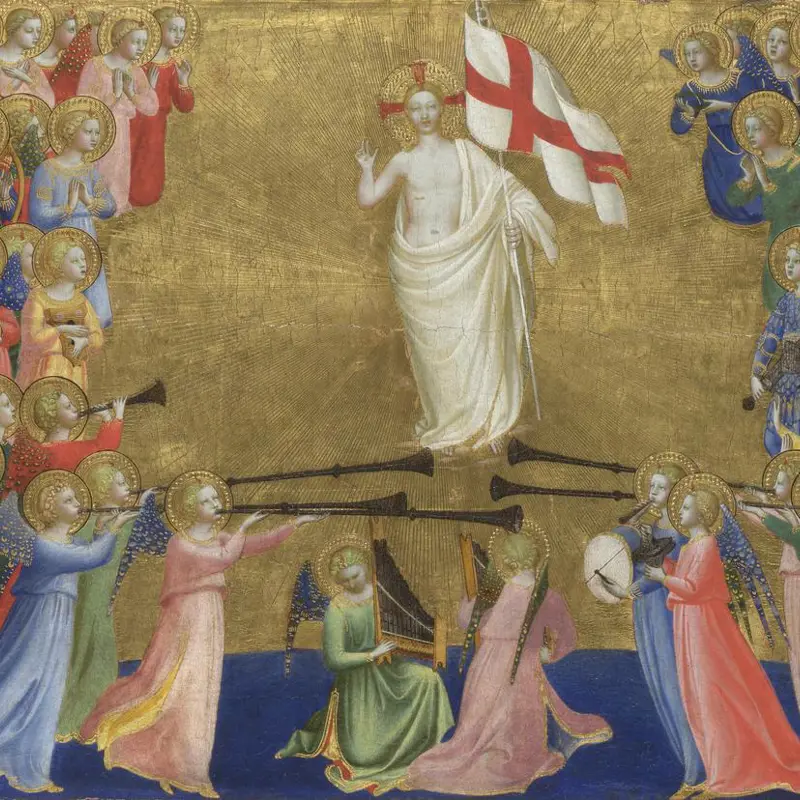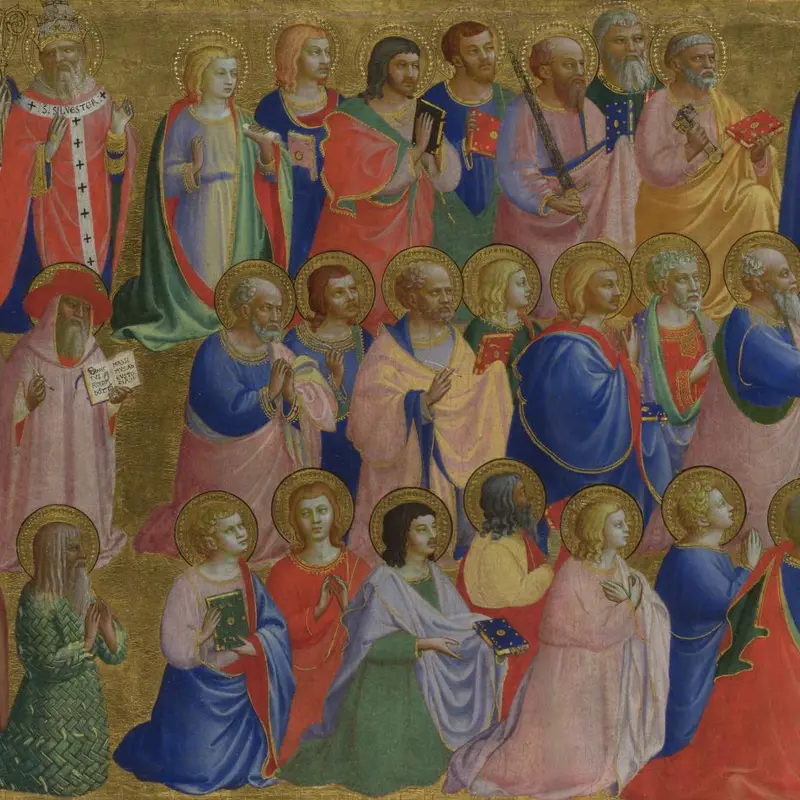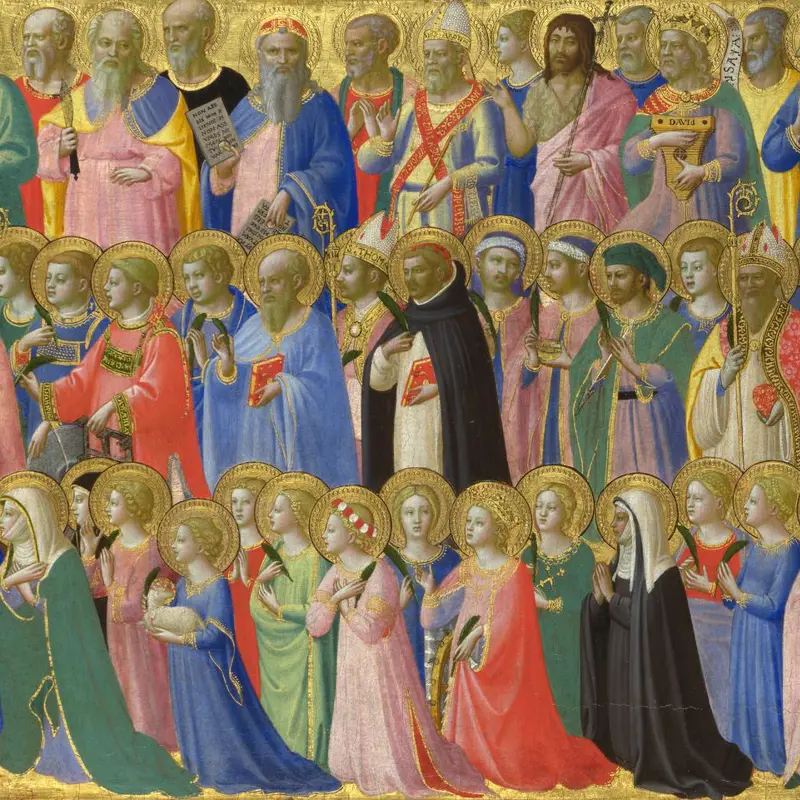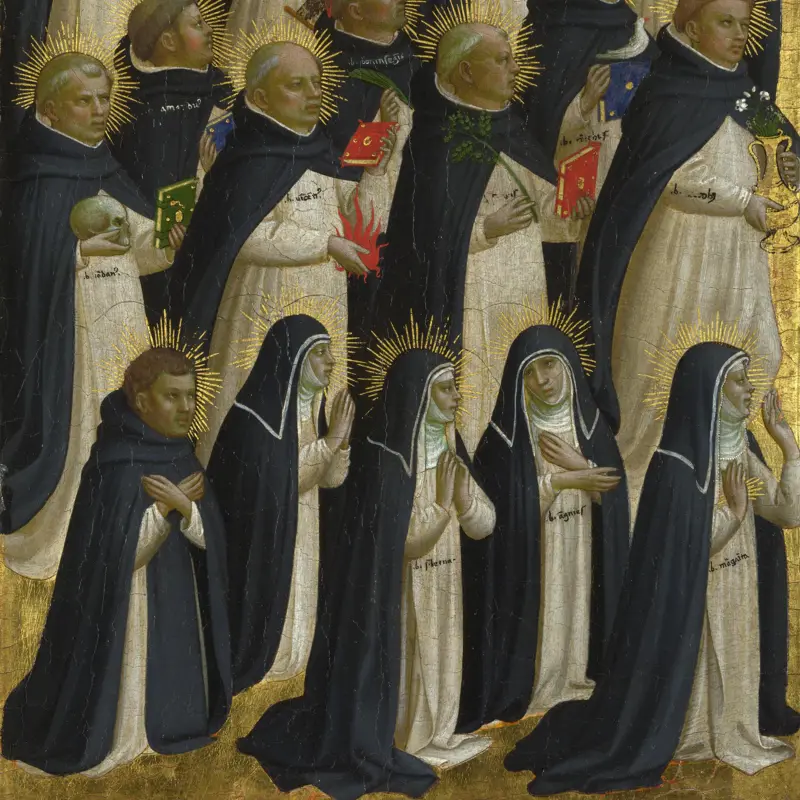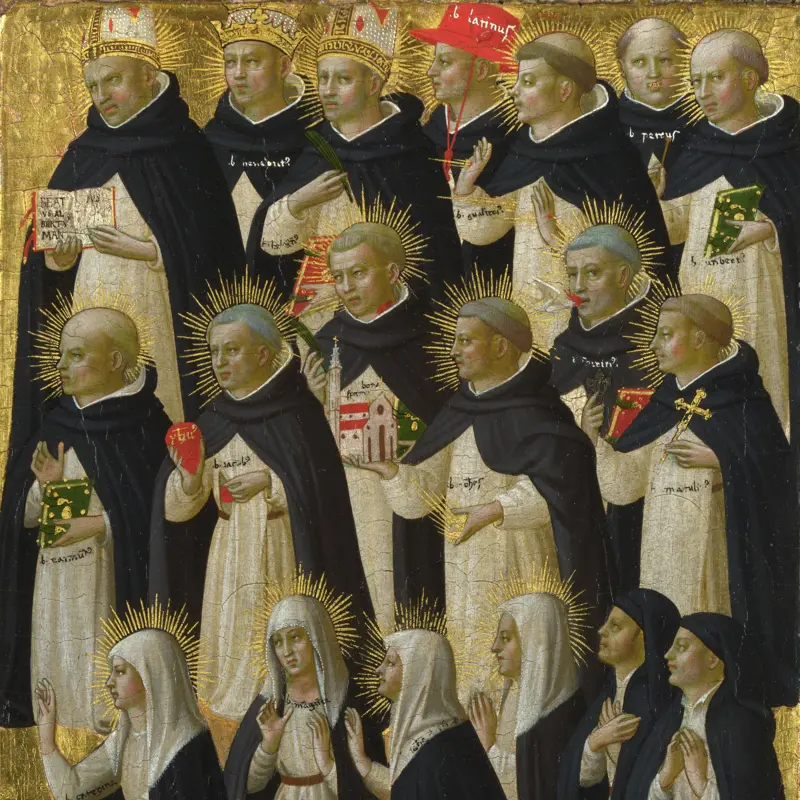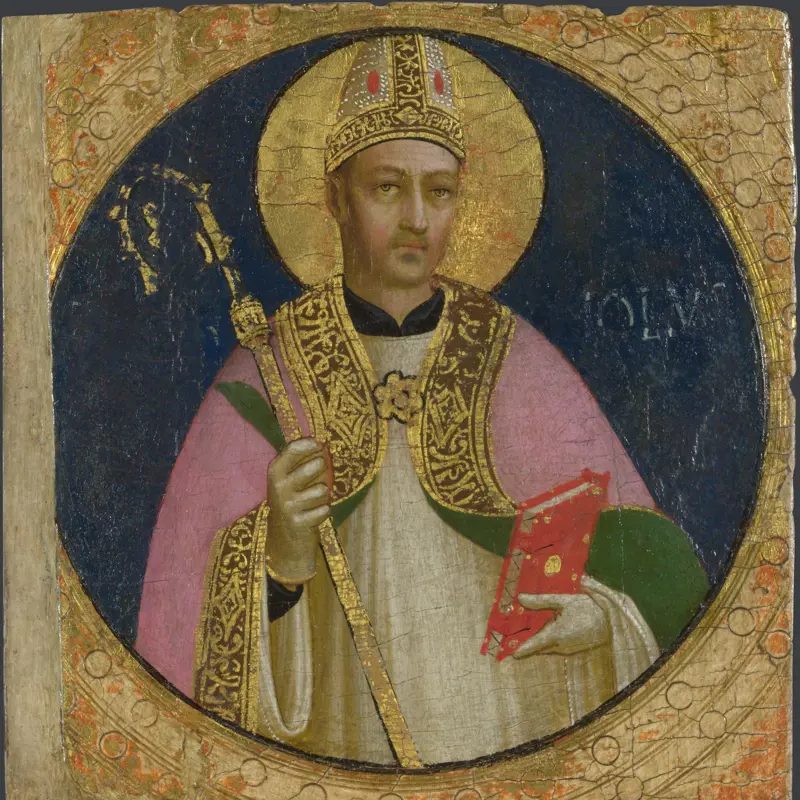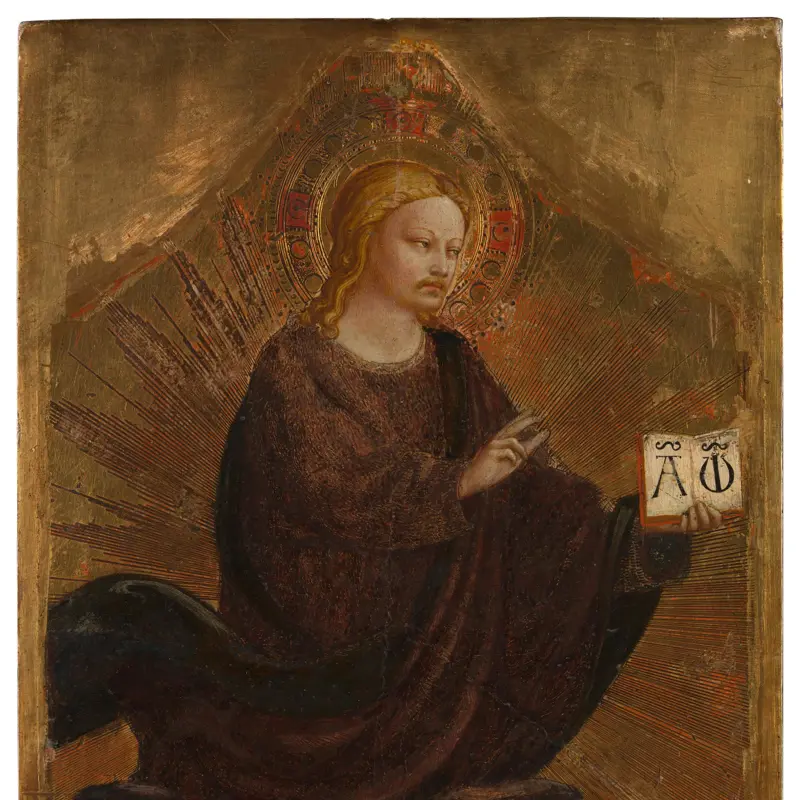Fra Angelico, 'The Dominican Blessed', about 1423-4
About the work
Overview
This panel shows the Dominican Blessed, both tertiaries (those who lived in general society rather than a convent, but were allied to the Dominican Order) and friars. They're dressed in their distinctive black and white habits, neatly lined up in rows.
The Blessed were holy figures belonging to the Order (called the Dominicans because they were founded by Saint Dominic) who were venerated locally after their death. Some, like Catherine of Siena, shown here kneeling at the head of the front row, were eventually recognised as saints.
This panel framed the predella (the lowest part) of the altarpiece, made for San Domenico in Fiesole, a town outside of Florence. The predella showed Christ surrounded by angels and saints; its panels, and the pair to this panel, are also in the National Gallery.
Key facts
Details
- Full title
- The Dominican Blessed: Outer Right Pilaster Panel
- Artist
- Fra Angelico
- Artist dates
- Active 1417, died 1455
- Part of the series
- Fiesole San Domenico Altarpiece
- Date made
- About 1423-4
- Medium and support
- Egg tempera on wood (probably poplar)
- Dimensions
- 31.6 × 21.9 cm
- Acquisition credit
- Bought, 1860
- Inventory number
- NG663.5
- Location
- Room 57
- Collection
- Main Collection
Provenance
Additional information
Text extracted from the ‘Provenance’ section of the catalogue entry in Dillian Gordon, ‘National Gallery Catalogues: The Fifteenth Century Italian Paintings’, vol. 1, London 2003; for further information, see the full catalogue entry.
Exhibition history
-
2015Visions of Paradise: Botticini's Palmieri AltarpieceThe National Gallery (London)4 November 2015 - 14 February 2016
-
2019Fra Angelico and the Rise of the Florentine RenaissanceMuseo Nacional del Prado28 May 2019 - 15 September 2019
Bibliography
-
1951Davies, Martin, National Gallery Catalogues: The Earlier Italian Schools, London 1951
-
1986Davies, Martin, National Gallery Catalogues: The Earlier Italian Schools, revised edn, London 1986
-
2001
C. Baker and T. Henry, The National Gallery: Complete Illustrated Catalogue, London 2001
-
2003Gordon, Dillian, National Gallery Catalogues: The Fifteenth Century Italian Paintings, 1, London 2003
About this record
If you know more about this work or have spotted an error, please contact us. Please note that exhibition histories are listed from 2009 onwards. Bibliographies may not be complete; more comprehensive information is available in the National Gallery Library.
Images
About the series: Fiesole San Domenico Altarpiece
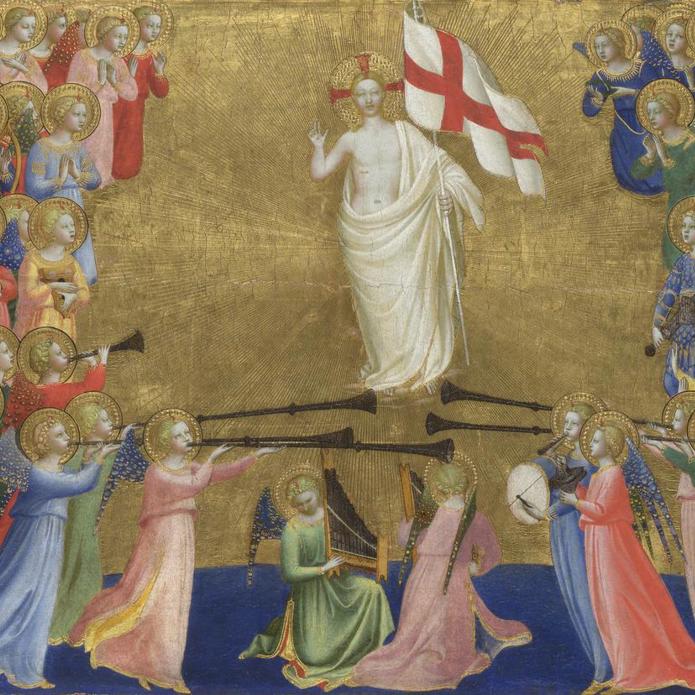
Overview
These panels come from the predella (lowest part) of the altarpiece made for the high altar of San Domenico, Fiesole. Fra Angelico was a Dominican friar (a member of the religious order founded by Saint Dominic) as well as a painter. The church was attached to his own convent – so although he made two other altarpieces for it, he was not paid for his work.
Predellas usually showed narrative scenes of the lives of the saints who were depicted in the main part of the altarpiece. This one is unusual: it shows Christ in glory in heaven, surrounded in the central scene by angels. This is framed by two panels showing rows of saints and Old Testament figures. These in turn are enclosed on either side by Dominican ‘Blessed’ figures who were holy and revered but not saints.
The mass of saints includes Dominicans and reflects their interest in the saints of their order and the place of the Dominicans in the broader church.

